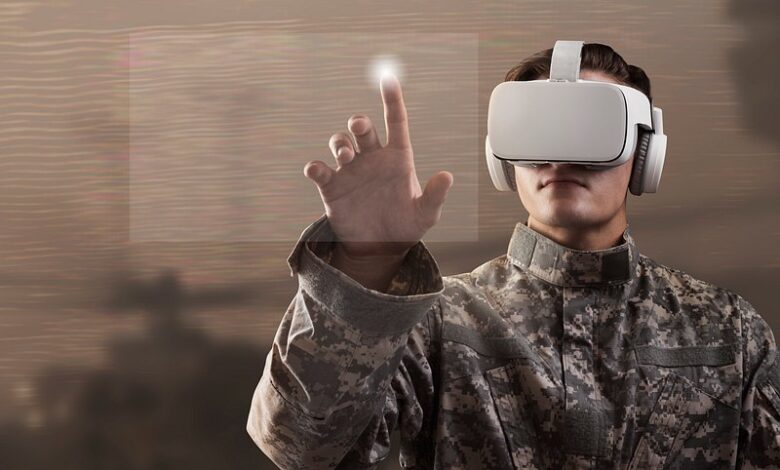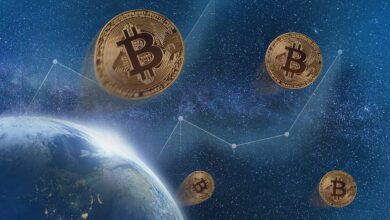Metaverse: New Worlds of Digital Life and Gaming

The concept of digital interaction has profoundly evolved beyond the simple, two-dimensional screens that have dominated our lives for decades. We are now standing at the threshold of the next major internet revolution, a massive conceptual shift toward immersive, persistent, and highly interactive three-dimensional digital environments.
This future is universally known as the Metaverse. The Metaverse is not a single technology or a singular game; rather, it is a persistent, shared, virtual space where the physical and digital realities converge seamlessly. It integrates social connection, digital identity, complex economic transactions, and vast virtual worlds into one cohesive, continuous experience.
At the forefront of driving this seismic transition is the gaming industry. Gaming has perfected the necessary technological infrastructure, user engagement models, and sophisticated virtual economies that now serve as the foundational blueprint for the entire Metaverse ecosystem.
Understanding the intertwined relationship between gaming and the emerging Metaverse is absolutely critical. It reveals how we will work, socialize, transact, and own assets in the digital future. This convergence represents the most ambitious technological and cultural shift since the invention of the internet itself.
Defining the Metaverse and Its Core Qualities
The Metaverse is essentially a collective, shared virtual space. It is created by the convergence of physically persistent virtual reality (VR), augmented reality (AR), and the real-world internet. It is characterized by several indispensable features that distinguish it from simple virtual reality. This unique combination of features is key to its vast potential.
The primary feature is persistence. Unlike a traditional game that ends when the user logs off, the Metaverse continues to exist and evolve independently. All changes, transactions, and interactions remain permanently in place. This continuity is essential for building a long-term economy.
Another key quality is interoperability. Assets, identities, and experiences should, ideally, be transferable between different virtual worlds or platforms. A user’s digital identity or a virtual item should move seamlessly from one game to another. This prevents the formation of isolated digital “walled gardens.”
Crucially, the Metaverse must possess a fully functioning, real-time economy. This economy is powered by digital currencies, cryptocurrencies, and Non-Fungible Tokens (NFTs). Users must be able to earn, own, invest, and transfer value with the same security and finality as in the real world. This economic layer is vital for engagement.
The final core quality is digital identity. Users are represented by persistent, customizable avatars that retain their social reputation and their ownership history across various platforms. This continuity of identity is essential for building genuine social connections and trust. The avatar is the user’s permanent self in the virtual domain.
The Indispensable Role of the Gaming Industry
The gaming industry serves as the initial, essential laboratory and the primary technological incubator for the entire Metaverse. Game developers perfected the necessary infrastructure and user engagement models long before the term “Metaverse” entered the mainstream. Gaming provided the proving ground for these concepts.
Game engines, such as Unreal Engine and Unity, already provide the sophisticated 3D rendering and physics capabilities required to build realistic, immersive virtual worlds. These engines allow millions of users to interact simultaneously in complex, graphically rich environments. This technology is directly transferable to non-gaming Metaverse applications.
Furthermore, massive Multiplayer Online Role-Playing Games (MMORPGs) have already established and perfected large-scale virtual economies. These economies involve sophisticated systems for in-game currency, item creation, trading, and asset scarcity. These virtual markets provided the essential blueprint for the cryptocurrency-powered economies emerging today.
The gaming community’s inherent willingness to adopt new technologies, from VR headsets to blockchain wallets, has accelerated the development process. Gamers are the first, crucial adopters who demonstrate the viability and potential of these immersive, virtual environments. Their enthusiasm fuels the entire sector’s innovation.
Economy: From Loot Boxes to Digital Assets
The economic structure of the Metaverse fundamentally relies on digital assets and a shift in the way users perceive ownership. Traditional gaming economies provided in-game items, but the ownership resided entirely with the game publisher. Web3 changes this dynamic entirely.
A. Play-to-Earn (P2E) Models
Play-to-Earn (P2E) is a revolutionary new gaming model. It allows players to earn real monetary value for the time and effort they invest in the virtual world. This value is often earned in the form of tokens (cryptocurrencies) or unique in-game items (NFTs). This model fundamentally transforms the player’s relationship with the game. This shift turns gaming from a simple expense into a potential income-generating activity.
B. Non-Fungible Tokens (NFTs) in Games
NFTs represent the verifiable, unique ownership of specific in-game items. This could include a rare weapon, a special skin, a unique character, or a parcel of virtual land. Because these assets are NFTs, the player truly owns them. This ownership is recorded immutably on the public blockchain.
Players can freely trade, sell, or transfer these NFT assets outside the game platform, even for real-world currency. This creates true asset portability and financial sovereignty for the player. The value of the asset is no longer dependent on the game publisher’s centralized database.
C. Metaverse Land and Real Estate
Virtual land ownership is a major component of the Metaverse economy. Parcels of virtual real estate are sold as unique NFTs. Owners can develop this land, host events, sell advertising space, or simply rent it out for passive income. The speculative value of this virtual real estate has reached staggering heights.
D. Governance Tokens
Many Metaverse projects are moving toward a Decentralized Autonomous Organization (DAO) governance model. Users who own the project’s native governance tokens gain voting rights. This allows them to participate directly in deciding the future rules, fee structures, and development direction of the platform. The token represents a unit of political power within the virtual world.
Technology Driving Immersive Experiences
![]()
The technical leap from 2D desktop screens to fully immersive Metaverse experiences requires constant innovation in multiple hardware and software sectors. These innovations are blurring the lines between the physical and the virtual. Seamless convergence is the ultimate goal.
E. Virtual Reality (VR) and Augmented Reality (AR)
Virtual Reality (VR) hardware, such as advanced headsets, provides a fully immersive, 3D experience that completely cuts off the user from the real world. This is ideal for deep gaming and simulation environments. Augmented Reality (AR) technology overlays digital information and virtual objects onto the real-world view via smart glasses or phone screens. AR is crucial for blending the Metaverse into daily life.
F. Real-Time 3D Rendering
The core software technology is the ability to achieve real-time 3D rendering on a massive, simultaneous scale. Game engines must handle complex geometry, lighting, physics, and the interaction of millions of user avatars instantly. The continuous performance optimization of these game engines is vital for providing a high-quality user experience.
G. Blockchain and Smart Contracts
The blockchain provides the necessary backend for verifying all economic activity instantaneously. Every purchase, every asset transfer, and every governance vote is executed by an immutable smart contract. The blockchain ensures that the digital world’s economy operates with verifiable security and transparency. The integrity of the economy relies on the code.
H. Avatars and Digital Identity
Advanced avatar technology is essential for user engagement. Avatars must be highly customizable, capable of expressing complex emotion, and portable across different virtual worlds. Digital Identity solutions, often secured by cryptographic keys, ensure the user’s reputation and ownership history remain persistent and verifiable wherever they travel in the Metaverse.
Challenges and The Future Trajectory
![]()
The journey toward a fully functional, globally adopted Metaverse faces significant, multi-faceted challenges. These hurdles must be addressed through a combination of technological breakthroughs, regulatory clarity, and a commitment to user safety. The complexity of this vision is immense.
Interoperability and Standardization remain a major technical challenge. Different platforms, built on different blockchains and different game engines, must find common protocols. Without unified standards, the Metaverse risks becoming a series of isolated, incompatible virtual silos.
Regulatory and Legal Uncertainty is pervasive. Governments are struggling to define taxation rules, legal jurisdiction, and securities laws for digital assets and virtual transactions. Clear legal frameworks are necessary to protect consumers and encourage institutional investment. This legal vacuum impedes mainstream adoption.
User Safety and Moderation in a persistent, anonymous virtual world present ethical challenges. The legal framework must address issues like harassment, virtual assault, and intellectual property theft in an immersive environment. Finding a balance between freedom and necessary moderation is critical.
The future of the Metaverse promises a deeper integration into professional life. Virtual workspaces, remote collaboration tools, and specialized industrial simulations will become common. The technology will move beyond pure entertainment to become a serious platform for business and education.
Conclusion
The Metaverse is the persistent, shared, virtual frontier where digital and physical realities converge.
The gaming industry serves as the primary incubator, providing the necessary technological infrastructure and economic models.
The core Metaverse economy is fueled by cryptocurrencies and verifiable digital ownership enforced by Non-Fungible Tokens (NFTs).
P2E models revolutionize gaming by allowing players to earn real monetary value for their time investment in the virtual world.
VR and AR technologies provide the essential hardware for fully immersive and blended physical-digital user experiences.
The blockchain and immutable smart contracts provide the necessary backbone for securing all asset transactions and digital identity.
The challenge of interoperability and the lack of unified legal regulation are the primary hurdles impeding universal adoption.
The long-term success of the Metaverse requires transitioning from isolated platforms to a seamless, standardized network of virtual worlds.
This technology is fundamentally transforming commerce, ownership, social interaction, and governance in the digital space.
The commitment to user ownership and decentralized control is the core philosophical driver of this massive technological shift.
Mastering the mechanics of this virtual space is essential for comprehending the future trajectory of all economic and social life.
The Metaverse ultimately stands as the next evolutionary step of the internet, defining the digital future for generations to come.


